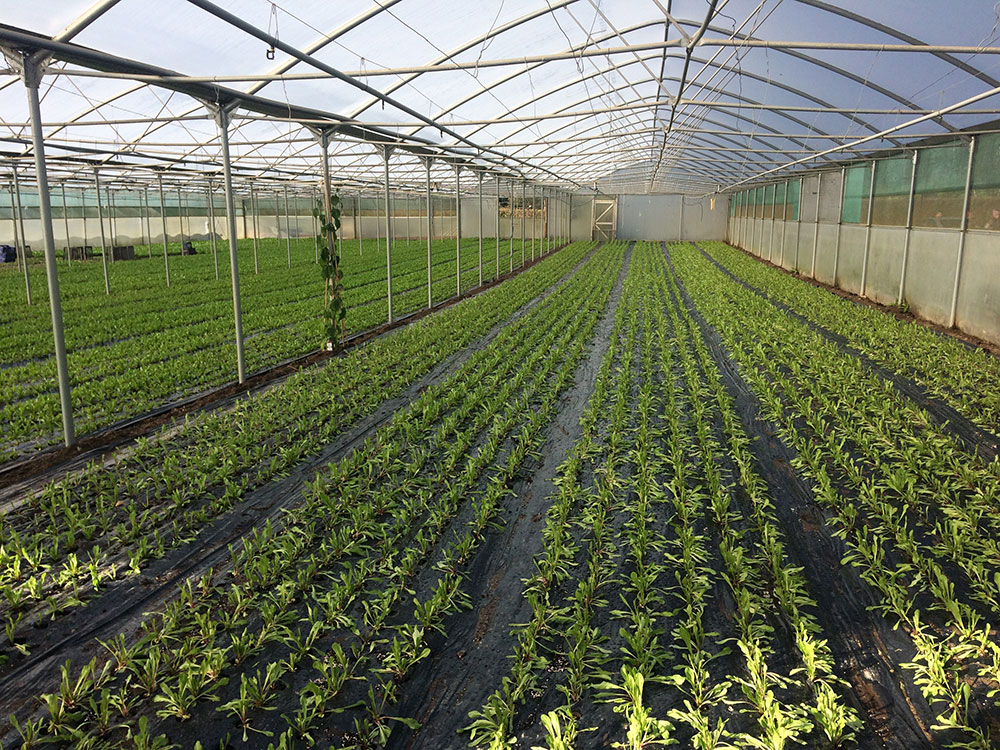Colder temperatures might get you reaching for the soups, stews and roast dinners, but sometimes you need a fresh taste alongside all that veg. Step forward winter salad, and more specifically, the bitter leaves such as dandelion, mustard, rocket and cress, whose peppery flavours warm you up in a very different way.

Walking through the polytunnels, farm manager Ed Scott says even he was initially sceptical about growing salad in winter. “Everyone gets a lot of winter veg at this time of year, and actually a bag of salad once a month is really nice,” he says, crouching by the neat rows of dandelion leaves inside one of the big arched tunnels. The dandelion variety in question, Italiko, is different to the one found in most gardens, although they are also edible, as it grows vertically making it easier to pick and leaves are cleaner as this variety grows away from the soil.
The winter salad leaves are known as “cut and come again”, explains Scott, as they will be harvested around every four weeks, depending on the leaf, from November until March or April. A side-effect of this technique is that the more peppery leaves, such as cress or mustard, tend to get spicier on every pick – believed to be an evolutionary trait as the plant tries harder to deter ‘predators’.
“You can also cook with these types of leaves, every now and then we might leave the dandelions to grow a bit longer and put out a recipe to cook with them, or you can do things like a risotto with rocket,” Scott continues, walking through the rows of tunnels. In summer, they are bursting with the heady smell of tomatoes, chillies and basil, and tropical-looking vines of cucumbers, before making way for the winter salad crop.
Under a cosy-looking layer of fleece are the green shoots of baby ruby chard, covered in the early stages to encourage it to grow. Then there’s the bright green frilly mustard leaves with their distinctive taste, and land cress, a cousin of water cress but grown in soil so it is safe from any risk of water-borne bacteria that water cress growers have to be so careful about.

And it’s not just bitter leaves that are selected for winter cropping – Butterhead lettuces are also a popular choice, explains Scott, holding up a dark red variety called Salanova, with its bi-coloured leaves bright green at the base and dark red at the head.
“They have a longer shelf-life and thick velvety leaves that are more cold resistant than something like a Cos lettuce, which is more watery so it doesn’t do too well in the frost because all the cells freeze and then burst,” he says.
Cut by hand, the bitter leaves and winter lettuces are harvested by teams of pickers through the day before being whisked off to the packhouse at Riverford HQ, less than a mile away. As Scott says: “Every bag of salad we can produce here is one less lettuce that we have to import from Spain.”












0 Comments